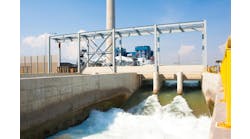Every day seems to bring news about the perils of another product from China. The list grows and grows: tainted petfood ingredients, unsafe additives in juice, toothpaste containing diethylene glycol, faulty tires, children’s toys with lead paint or too small parts … It’s almost getting to the point that we should call some Chinese exports not goods but bads.
While the publicity centers on failings in the consumer products sector, there can’t be much doubt that the practices and attitudes typify what’s happening in Chinese manufacturing in general. Accountability can be an issue, and this can lead to a temptation to cut corners.
However, the quality of products from the country’s chemical industry doesn’t seem to be raising alarms. Perhaps a reason for this is that much of the output goes to other companies for further processing or use and many of these customers insist upon strict specifications and enforce them. Or perhaps we just aren’t getting details about the problems.
In any event, China is causing harm that goes far beyond poor products. Its environmental performance is taking a heavy toll.
Recently, the Paris-based Organization for Economic Cooperation and Development (OECD), which counts countries from Australia to the U.S. as members, released its first-ever Environmental Performance Review of China and the conclusions provide somber reading.
China has enacted modern environmental legislation, strengthened environmental institutions and given higher priority to environmental and natural-resources management, according to the OECD report. However, inadequate implementation has hobbled the effectiveness and efficiency of its efforts.
The biggest obstacles to environmental policy implementation are at the local level, the report stresses. There, authorities needn’t worry much about accountability to people in the area and have placed economic priorities over environmental concerns.
Perhaps we should take some comfort that U.S. and European manufacturers building chemical plants in China invariably say that those plants conform to the same environmental standards as their other plants.
Overall, though, air pollution in some Chinese cites is among the worst in the world.
The draft report noted that 750,000 people die prematurely each year in China because of air pollution, says The Financial Times, which adds that the analysis was deleted at the country’s insistence. Volatile organic compounds and toxic air pollutants receive insufficient attention, states the report. About one-third of surface waters are severely polluted, and the amounts of municipal, industrial and hazardous waste far exceed what can be safely treated and disposed of, it adds.
The dire environmental situation in China not only affects the people and landscape there but has an international dimension, the report makes clear. “China… remains the second largest contributor of greenhouse gases, and is still the world’s largest producer and consumer of ozone-depleting substances. Its largely coal-fired economy is a major source of acid rain and other transboundary air pollutants in Northeast Asia, and is a significant contributor to global-scale air pollution, including mercury.”
The OECD report offers a number of recommendations but cautions: “To achieve success, increased financial efforts from China as well as major technical support and targeted financial assistance to China from OECD countries and international financial institutions will be required.”
Clearly, we have a lot more to worry about from China than just dangerous toys, toothpaste and tires.
